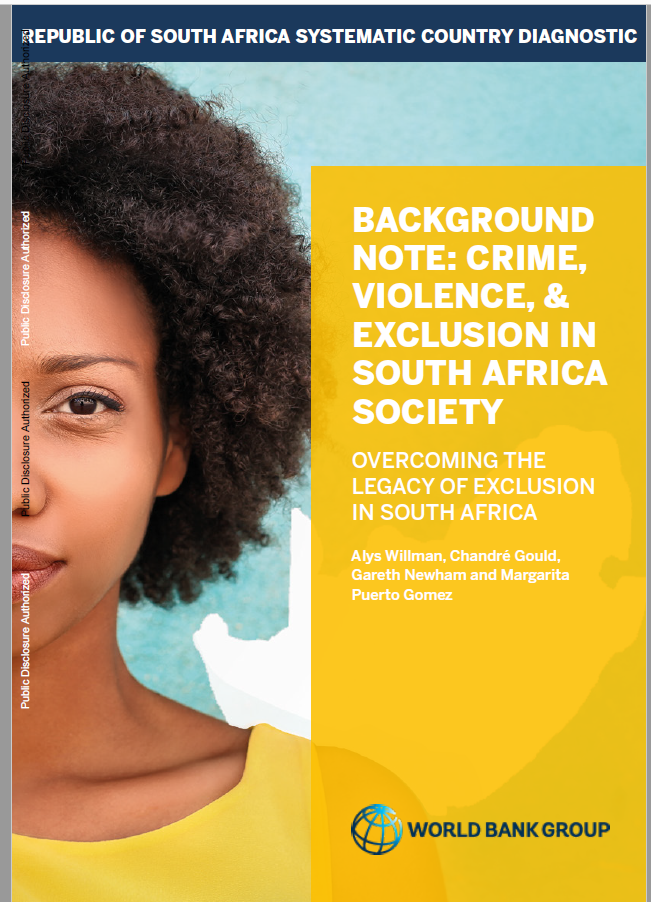Background Note: Crime, Violence, & Exclusion in South Africa Society
Overcoming the Legacy of Exclusion in South Africa

This background note has been prepared as part of the Systematic Country Diagnostic (SCD) to guide the World Bank’s operations in South Africa. It provides an overview of the current situation, with particular attention to its roots in the country’s history of inequality and exclusion.
For many South Africans, violence is a part of daily life. It exists in their homes, in their schools, and in their communities. It is, to some extent, a normalized aspect of social interactions. The high rates of violence are a testament to the country’s lingering legacy of inequality and exclusion and a symptom of its continuing fragility.
While South Africa has made important gains in reducing violence in the post-Apartheid- era, it remains among the most violent countries in the world. After a significant decline during the period 1994–2011, annual homicide rates— the most commonly used proxy indicator for overall violence and crime—increased to 33 per 100,000 people, roughly 5 times the global average (ISS 2017b, UNODC 2013). Violence against women and children remains prevalent, and school violence presents a major challenge.
Violence exacts enormous economic and social costs in South Africa. The direct costs of gender-based violence alone are an estimated R28.4–R48.2 billion (US$23–4 billion) per year (ISS2017b). A more recent study commissioned by Save the Children South Africa has estimated the direct and indirect costs of violence against children to be R238 billion (US$19 billion) per year (Save the Children 2016). Beyond the human impact of lives lost and altered by violence, the costs of responding to violence overwhelm households and communities, drain state resources, and discourage investment in human and financial capital.
To date, the policy response to crime and violence in South Africa has been uneven. However, opportunities for a more coherent response are emerging. Efforts are underway to streamline policies across departments and spheres of government and shift toward a better balance of measures to respond to violence, particularly through law enforcement, and to prevent it by addressing risk factors. South Africa possesses several elements that would facilitate such a process, including strong data collection systems, a growing evidence base for programs, and increasing dialogue among stakeholders.
This paper is divided into seven sections. It begins with key definitions and provides a typology of violence and crime, followed by an overview of crime and violence in South Africa. Next, it gives an overview of risk factors for the most prevalent types of crime and violence, with a focus on poverty and inequality, in line with the SCD framework. An overview of the key policies and institutions responsible for violence and crime prevention follows. The paper concludes with a few broad policy recommendations.


Comments